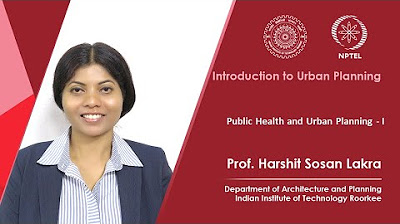Lecture 20: Contextualizing Cities (1900-1939)
TLDRThis script encompasses a diverse range of topics, intertwining urban planning, historical evolutions of cities post-industrialization, and the impact of social and economic reforms on public health and community living. It highlights the transition of cities like Mumbai under the pressures of increasing population and migration, touching upon the importance of social cartography in understanding these changes. The narrative delves into the significance of educational approaches in planning, comparing Indian and global contexts, while also emphasizing the role of media, environmental considerations, and the evolution of transportation systems. Repeated calls to subscribe suggest an educational or informative video series aimed at engaging viewers with content on urban development, social reforms, and the historical transformation of cities.
Takeaways
- 📺 The video heavily emphasizes the importance of subscribing to the channel, mentioning it repeatedly throughout the script.
- 🏃♂️ Urban planning and its effects on post-industrialization cities are highlighted, focusing on social and economic reforms.
- 📸 Photography is mentioned as a significant tool for documenting social changes and reforms.
- 📈 The script touches on the challenges of increasing population in cities like Mumbai and the migration issues associated with it.
- 🛣️ Public health discussions include historical points like the cholera outbreaks and their representation on maps.
- 📍 Social cartography and the use of maps to illustrate income disparities and other socio-economic factors are discussed.
- 💻 The lecture includes comparisons of Indian and global urban planning issues, suggesting a learning approach to planning in a social context.
- 📷 Charles Dickens is referenced, possibly to draw parallels between his work on social reform and the current social issues addressed in the video.
- 📚 The importance of historical and modern educational principles in addressing contemporary urban challenges is underlined.
- 🚂 Railway services in Mumbai and their historical significance are briefly mentioned, illustrating the city's industrial and transport evolution.
Q & A
What is the video about?
-The video seems to be about urban planning and development in Indian cities.
What time period is covered in the video?
-The video references some events from the past like India's independence movement and industrialization, but mainly focuses on urban issues in modern Indian cities.
What are some of the major issues discussed?
-Overpopulation, migration, poverty, inadequate infrastructure, and lack of proper urban planning.
How can urban planning help address these issues?
-Better urban planning with a focus on transportation, housing, sanitation and managing growth can help make cities more livable and sustainable.
What are slums and their impact?
-Slums are informal settlements within cities that lack proper infrastructure. They have many social issues and pose challenges for cities.
What is the relationship between rural and urban areas?
-The video references migration from rural to urban areas being a major reason for rapid, uncontrolled urbanization in India.
How can public transportation be improved?
-Upgrading rail and metro networks, adding new routes, integrating different transit modes can improve mobility.
What is social cartography?
-It refers to mapping social and economic indicators to visualize and compare living conditions across cities.
What time period does the Mumbai section focus on?
-It seems to talk about Mumbai from the 1990s onwards, especially the fast paced growth in recent decades.
What solutions are offered in the video?
-Decentralized planning, better policies for managing growth, investments in transit and housing are some solutions given.
Outlines
Title for Paragraph 1 in Hindi
Detailed summary for Paragraph 1 in Hindi
Title for Paragraph 2 in Hindi
Detailed summary for Paragraph 2 in Hindi
Mindmap
Keywords
💡Urban Planning
💡Subscribe
💡Music
💡Social and Economic Reform
💡Industrialization
💡Public Health
💡Migration
💡Social Cartography
💡Real Estate
💡Green Spaces
Highlights
Introduction to urban planning
Cities reviewed and industrialization discussed
Social and economic reforms mentioned
Public interest and social context examined
Urban planning issues and approaches compared
Planning and social context compared - Indian and global
Language problems discussed
Urban poverty visualized and examined
Urbanization and population growth discussed
Political, economic and social organization mentioned
Rural and urban planning relationship discussed
Political discourse and public interest examined
Social reformers and public interest highlighted
Differences between communities noted
Beautiful cities and quality of life discussed
Transcripts
Browse More Related Video

Lecture 25: Public Health and Urban Planning - III

Lecture 23: Public Health and Urban Planning - I

Lecture 26: Public Health and Urban Planning - IV

Lecture 24: Public Health and Urban Planning - II

Lecture 32: Evolution and Growth of Planning Legislation I

Lecture 18: Contextualizing Cities (Greek and Roman)
5.0 / 5 (0 votes)
Thanks for rating: